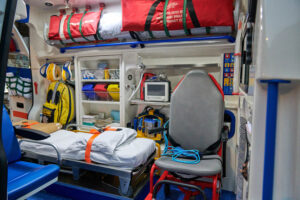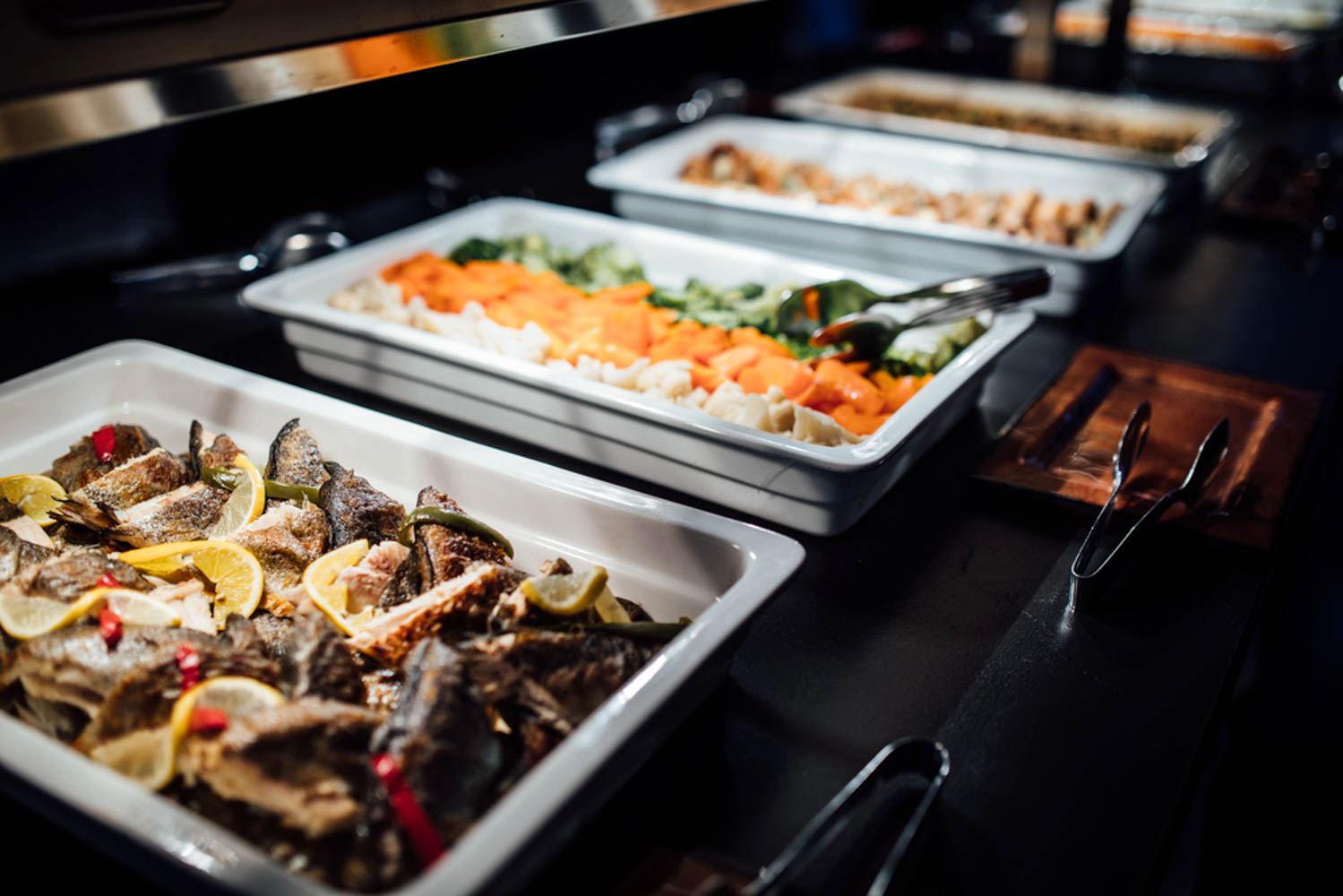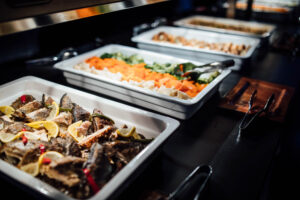
Protecting Workers with Remote Camp Health and Safety
Remote camp health and safety is a vital concern in the management of Canadian remote workforce camps, especially in resource-driven

Keeping crews energized and satisfied starts with smart camp food menu ideas—especially in remote environments where morale and nutrition go hand in hand. Whether you’re managing a mining site, a forestry camp, or a seasonal construction crew, rotating menus that balance variety, simplicity, and logistics can make all the difference.
Monotony is the enemy of appetite. Even the most well-prepared meals lose their appeal when repeated too often. A rotating menu system not only prevents food fatigue but also boosts morale, supports nutritional balance, and helps streamline procurement and prep.
In high-demand environments, remote camp food catering teams often face the challenge of feeding dozens (or hundreds) of workers with limited kitchen space, unpredictable supply chains, and tight schedules. A well-designed rotation strategy can reduce waste, improve efficiency, and keep taste buds interested.
Meals do more than nourish—they offer comfort and a morale boost to crews far from home. Rotating camp food menu ideas weekly combats menu fatigue and creates a more positive atmosphere around meal times. It’s not just about variety for its own sake—it’s about sustaining energy, focus, and performance in tough working conditions.
Start with a base weekly template that can be rotated and varied slightly to maintain novelty. This template should include:
This “base framework” becomes the foundation that allows camp catering companies to tweak and modify without overhauling entire menus every week.
Themed meals are a great way to inject fun and anticipation into the week. Examples include:
Such concepts add excitement and make the menu feel dynamic. They also help remote site catering teams plan procurement and prep work around predictable, repeatable frameworks that rotate.
One effective method used by successful camp catering services is a 4-week rotating menu. Each week offers a new cycle of meals, which then resets at the start of the next month. This keeps things fresh, while allowing for repetition that simplifies logistics.
By the time Week 1 returns, enough time has passed to feel new again. This model also allows remote site chefs to refine recipes and improve based on feedback.
Ingredient logistics can make or break a remote meal program. A core principle of effective camp food menu ideas is managing ingredients that work across multiple dishes.
Here’s how to do it right:
Proper planning ensures that you’re not flying in fresh basil for one dish or wasting perishables. The goal is to keep variety high without increasing inventory complexity—a key skill of experienced remote camp chefs.
One often overlooked tactic is involving the crew in menu planning. Creating a simple feedback form or using a digital suggestion box gives crews a voice. Consider:
When crews feel heard, they become more engaged and invested in meal times. And this feedback helps remote site chefs tailor their menus to suit real tastes—not just what’s convenient to cook.
Today’s crews are more diverse than ever, and food camp menu strategies must reflect that. Vegetarian, vegan, gluten-free, and allergy-conscious options should be baked into your rotation.
Rather than treating these as afterthoughts, build them into your base menu:
This ensures no one feels left out and reflects the professionalism expected from high-quality camp catering operations.
Managing all of this in-house can be overwhelming. That’s why many companies outsource to specialized camp catering companies that understand the complexity of operating in remote locations. These experts bring:
By outsourcing or partnering, companies ensure consistent, high-quality meals while reducing internal burdens.
At the end of the day, simplicity is your friend—but that doesn’t mean boring. Simple meals executed well with fresh ingredients and seasoning will always beat out overcomplicated recipes that flop due to poor execution or lack of ingredients.
Some examples of simple-yet-engaging menu hits:
Encouraging creativity within simple frameworks is one of the defining traits of the best remote camp food catering teams.
Rotating menus isn’t just about avoiding repetition—it’s about creating a food experience that supports morale, nutrition, and operational efficiency. With smart planning, crew input, and flexible logistics, your camp can serve meals that feel fresh, satisfying, and sustainable week after week.
Whether you’re working with camp catering companies, managing remote camp chefs, or coordinating with remote site catering teams, the right rotation strategy can turn mealtime into a highlight of the day. And when done well, your rotating camp food menu ideas will be remembered long after the last plate is cleared.
Work with our expert remote camp chefs to create the perfect rotating menu for your site. Contact the Domco Group today to get started!
Domco Group of Canada Limited is one of the most trusted and well respected remote sites service providers in Canada. Fully Canadian and independently owned, Domco has been in operation since 1945. We offer integrated remote site solutions, including a nutritious and well planned menu cycle, long-term relationship building, and deep Canadian roots in remote locations with Aboriginal communities.
Let us take you through some key advantages that set us apart.

Remote camp health and safety is a vital concern in the management of Canadian remote workforce camps, especially in resource-driven

Keeping crews energized and satisfied starts with smart camp food menu ideas—especially in remote environments where morale and nutrition go

Gas remote camp mobilization is a critical operational phase in Canada’s oil and gas industry, particularly in remote and northern

When it comes to remote site security in Canadian work camps, ensuring safety and protection is paramount. These facilities, often

In Canada’s vast and resource-rich landscapes, remote site maintenance plays a pivotal role in sustaining the operations of work camps

In Canada’s vast and often isolated regions, remote camp management plays a vital role in advancing sustainability across diverse work

Remote site administration is a vital function in Canada’s most geographically isolated and operationally demanding environments. From the Arctic’s frozen

Developing a sustainable infrastructure for a remote camp facility located in the rugged, often isolated regions of Canada—such as the

In Canada’s vast and rugged landscapes, remote facility catering has evolved from a logistical challenge into a platform for sustainable

Budgeting for facility repair and maintenance in remote Canadian work sites is no small task. When miles away from urban

The process of gas remote camp mobilization in Canada is a critical operation that supports the development and maintenance of

Remote facility chefs are the unsung heroes of Canada’s sprawling wilderness operations—from fly-in camps tucked into diamond-rich tundras to energy

Exploration remote camp mobilization in Canada is a critical logistical and operational process that supports field-based activities in some of

Remote off site monitoring is transforming how Canada’s resource sectors manage operations across vast and isolated landscapes, making it a

Remote site services play a critical role in supporting Canada’s natural resource industries—particularly oil, gas, and mining—which have long been
